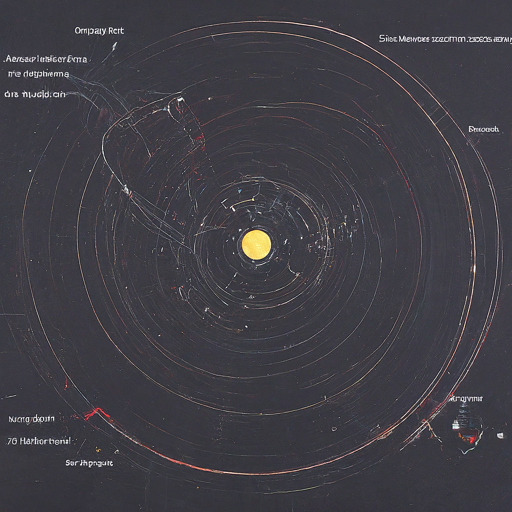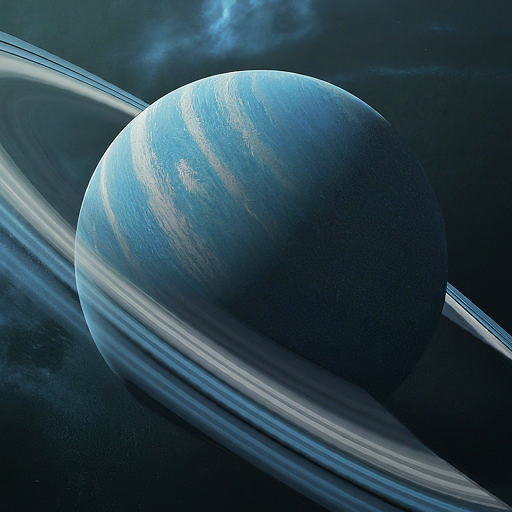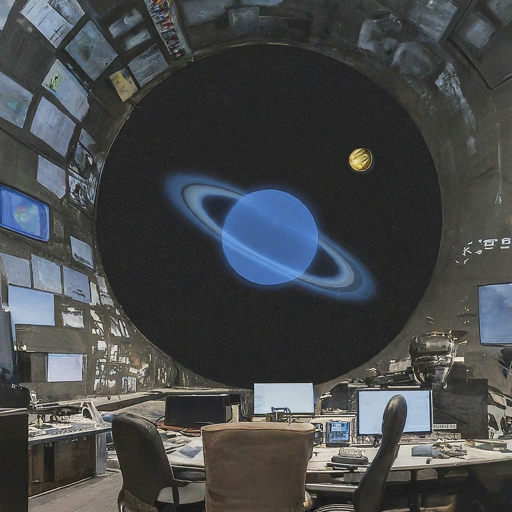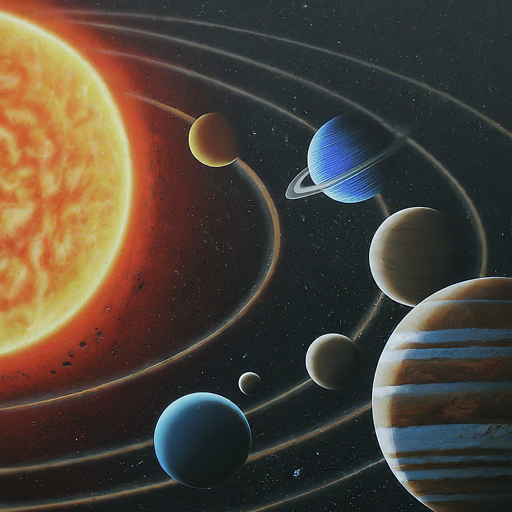Imagine an unseen force so powerful that it shapes the orbits of distant objects in space, yet remains unknown and unseen to us. This is the enigma of Planet Nine, a hypothetical world that may lie beyond Neptune, altering the course of celestial bodies in a way that hints at its immense presence. It’s the stirring thought of an entirely new planet in our Solar System that has reignited the fervor in astronomers and space enthusiasts alike. Despite our extensive knowledge, the potential Planet Nine discovery serves as a jolting reminder that vast expanses of our cosmic backyard remain unexplored, possibly harboring a ninth planet we have yet to visually capture. Join us as we delve into the mysteries and scientific pursuits aimed at revealing this cryptic celestial player in our Solar System’s grand narrative.
The Mystery of Planet Nine in the Fabric of Our Solar System
The concept of a ninth planet, lurking unseen in the shadowy fringes of our solar system, has captured the imagination of the scientific community and the public alike. Amid the pursuit of Planet Nine, astronomers have scoured the heavens, leading to a fascinating array of astronomical anomalies that bolster the Planet Nine hypotheses. This interstellar enigma has profound implications, potentially revolutionizing our understanding of the cosmic neighborhood and the mysterious Kuiper Belt.
Astronomical Anomalies Suggesting Existence
Strange movements in the cosmos have often heralded the discovery of new planets. In the modern quest for Planet Nine, it is the peculiar orbits of some trans-Neptunian objects that suggest the presence of an unseen massive body. These objects, with orbits defying the gravitational pull of known planets, hint at a disturbance in celestial order. This disruption could be explained by the existence of a ninth planet.
Historical Context of Planet Nine Hypotheses
The search for Planet Nine is not without precedent. Astronomy’s history is a quest for new Solar System members, refining our cosmic map. Discoveries, like Uranus, Neptune, and Pluto’s reclassification, deepen understanding of celestial mechanics. Historical forays set the stage for today’s hypotheses and methods.
Impact on Our Cosmic Neighborhood Understanding
The potential discovery of Planet Nine stands to alter the very fabric of our understanding of the solar system. Beyond the thrill of adding a new planet, implications for our cosmic neighborhood are immense. Interactions within the Kuiper Belt highlight the intricate gravitational dance that shapes the trajectories of its objects. If a ninth planet exists, it would redefine the outer solar system and clarify distant sun influences.


In-Depth Look at the Evidence: Kuiper Belt’s Irregularities
The quest to understand the outer Solar System unveils Kuiper Belt irregularities’ gravitational symphony. Dwarf planets’ asymmetrical orbits imply a potential Planet Nine, an unseen maestro. This section unravels the intricate ties between these observations and the ninth-planet evidence.
- Observations of Kuiper Belt objects show clustering in orbits that hint at the presence of a large external force.
- Dwarf planets like Eris and Sedna show peculiar orbits suggesting disturbances from a substantial mass.
- Telescopic data is crucial, but only specific simulations can replicate these patterns, including a hypothetical ninth planet.
In the quest to substantiate the Planet Nine hypothesis, researchers leverage a wealth of data. The table below shows notable orbital anomalies of Kuiper Belt Objects (KBOs), crucial for supporting the idea of this yet-to-be-discovered planet.
Notable Kuiper Belt Object Anomalies
| KBO Designation | Orbital Period (Years) | Eccentricity | Inclination (Degrees) | Comments |
|---|---|---|---|---|
| 90377 Sedna | 11,400 | 0.854 | 11.93 | One of the most distant known objects; its unusual orbit suggests a perturbing presence. |
| 2012 VP113 | 4,300 | 0.69 | 24 | Another detached object with an orbit that avoids major KBOs, hinting at a possible external gravitational influence. |
| Eris | 558 | 0.44 | 44 | Its discovery led to a reclassification of Pluto and offers further evidence of potential gravitational disturbances. |
Conversations with leading astronomers reveal a sense of cautious optimism. Recent simulations, incorporating the influence of a hypothetical ninth planet, show remarkable consistency with these recorded anomalies. As one researcher put it, “The cluster of orbits within the Kuiper Belt appears orchestrated by the gravity of something significant.”
The collective gravity of everything we can see in the Solar System cannot account for the eccentricities of the orbits we observe in the Kuiper Belt. An additional gravitational pull seems necessary, and Planet Nine stands as the prime suspect.
The investigation into these cosmic mysteries continues, with each observation adding to our understanding of the Solar System. The direct detection of Planet Nine remains elusive, but studying dwarf planet behavior and Kuiper Belt orbits convinces more scientists of its potential reality.
Planet Nine, Ninth Planet, Solar System, Kuiper Belt, Dwarf Planets, Astronomica


In the far reaches of our Solar System, the hypothetical Celestial body Nine beckons astronomers as a silent enigma. Efforts to uncover this unseen body use various techniques, epitomizing modern astronomical research. Dwarf planets play a pivotal role in potentially rewriting Solar System textbooks. Join us on a voyage through the technological and collaborative advancements that are guiding today’s astronomers in this interstellar quest.
Observational Techniques in the Hunt for Planet Nine
Armed with state-of-the-art technology, scientists around the globe are relentlessly fine-tuning their observational prowess. Legislation of telescopes perched atop serene, high-altitude locations coupled with sophisticated space-based observatories forms a relentless watch over the heavens. Intensive efforts employ various tools, valued for precision, in scanning for Celestial Body Nine in the cold vastness. Each tool is valued for its precision and depth in scanning the celestial frontiers for any trace of Planet Nine.
Collaborative Efforts in Astronomica Research
The search for the ninth planet unites international organizations like NASA and the European Southern Observatory. This collaboration has birthed a dynamic ecosystem of shared research, where theories and data flow freely between continents. The heart of the endeavor beats through intricate networks of astronomical research. It exemplifies a commitment to sharing discoveries and resources and building collective knowledge.
Understanding Dwarf Planets and Their Role
Dwarf planets, those cosmic underdogs, play an unsung yet intrinsic role within the cosmic dance of our Solar System. Despite their smaller stature, these celestial bodies provide valuable insights into the mass and gravitational forces at play in the outer regions of our celestial neighborhood. Their orbits, shaped by unseen influences, may hold the keys to confirming the existence of Planet Nine and ushering in a new chapter in our understanding of the universe’s architecture.
The Technological Advancements Propelling Planet Nine Discovery
The unceasing quest to unravel the mysteries of our Solar System is now in an exhilarating phase with the speculation of a New Celestial body in the Solar System. This possible Planet Nine Discovery has empowered scientists and astronomers around the globe, thanks in large part to the incredible Technological Advancements in space exploration tools and techniques. From innovative telescopes to cutting-edge computational models, these advancements have opened new avenues for discovery and bolstered the potential for breakthrough findings.
Powerful Telescopes
Spearheading the arsenal for astronomers is a suite of powerful telescopes. Telescopes with advanced sensors provide clear, detailed images of space objects. They are situated in Earth’s highest, driest locales and in orbit. Sophisticated AI and machine learning algorithms are integrated into computational models. They analyze vast data quantities with precision and previously unfathomable speeds.
Collaborative Efforts
Interdisciplinary collaboration has catalyzed these developments. Space agencies, academic researchers, and private technology firms have converged to design and deploy instruments that can withstand the rigors of space, provide high-resolution imagery, and filter cosmic noise that otherwise obscures celestial objects of interest.
| Technological Tool | Function | Impact on Planet Nine Discovery |
|---|---|---|
| Advanced Space Telescopes | Capturing high-resolution deep space images | Allows for analysis of distant orbits possibly affected by Planet Nine’s gravity |
| Radio Telescope Arrays | Mapping cosmic radio waves | Enhances the understanding of space object compositions, crucial for finding new celestial bodies |
| Infrared Sensors | Detecting heat signatures | Provides capability to spot potentially cold objects in the outer Solar System |
| Interplanetary Space Probes | Conducting in-situ measurements | Gathers on-location data for better modeling of planetary influences |
| High-performance Computing Clusters | Processing astronomical data | Facilitates the simulation of gravitational effects pointing to the existence of Planet Nine |
The synergy between these leading-edge tools and the intellectual curiosity driving the scientific community forward underscores the idea that the discovery of Planet Nine — or any other New Planet in the Solar System — is not only possible but imminent. It is this blend of innovation, collaboration, and determination that continues to push the boundaries of our cosmic knowledge.
Conclusion
The pursuit of Planet Nine reflects the human spirit of exploration, urging us to reconsider our place among the stars. The impact of Planet Nine, if confirmed, promises fresh insights into space science and astronomy. It would offer new perspectives on planetary formation and celestial mechanics. It marks an era where the new frontier is deep within our Solar System. The cosmic shores of our home beckon exploration beyond the sky.
The Potential Impact of Discovering a New Planet in the Solar System
Unveiling a new planet in our Solar System would herald a triumph in space exploration. It would reshape scientific frameworks and extend our cosmic cartography. The discovery would stimulate a reevaluation of theories surrounding planetary dynamics, influencing future curricula in Educational Space Science. Such an achievement would underscore the profound impact of Planet Nine on how we comprehend our Sun’s planetary system and its genesis, extending the boundaries of human knowledge.
What the Future Holds for Planet Nine Exploration
Peering into the not-so-distant future, we anticipate a surge in missions dedicated to unveiling the mysteries of Planet Nine. These explorations could revolutionize space travel concepts. They might yield technologies for venturing into the Solar System’s far reaches. An emerging generation of spacecraft could meander through celestial darkness. They might unveil secrets of this elusive celestial body. The endeavor will not only highlight the Future of Solar System Exploration but also serve as a catalyst for burgeoning interest in space technologies and strategies.
Encouraging Public Interest and Educational Aspects of Space Discovery
At the intersection of discovery and imagination lies the power to fuel Public Interest in Space Discovery. The storytelling of Planet Nine’s search engages classrooms with the cosmos. It inspires future scientists, engineers, and dreamers. Outreach programs and STEM initiatives use Planet Nine to illustrate space exploration. They nurture a well-informed and enthusiastic public. Here you can see the planet’s habits.
FAQ
What is Planet Nine?
Planet Nine is a hypothetical planet proposed to exist in the far reaches of our Solar System, beyond Neptune. It is theorized to be influencing the orbits of objects in the Kuiper Belt, leading to speculation about its existence despite it not yet being directly observed.
Why is the Planet Nine hypothesis important?
The hypothesis of Planet Nine is significant as it attempts to explain various astronomical anomalies in our Solar System, particularly the unusual orbits of some trans-Neptunian objects. If proven, it could expand our understanding of the Solar System’s structure and formation.
Have there been other hypothetical planets proposed in history?
Yes, there have been several historical instances of hypothetical planets proposed by astronomers, such as Planet X or Vulcan, which were suggested to explain certain gravitational effects before better theories or observations accounted for these phenomena.
What evidence supports the existence of Celestial body Nine?
The primary evidence supporting the existence of Celestial body Nine includes irregularities in the orbits of distant Kuiper Belt objects. These orbits can be better explained by the gravitational influence of a yet unseen ninth Celestial body in the Solar System.
How do scientists search for Celestial body Nine?
Scientists use advanced observational techniques, like powerful ground-based telescopes and space telescopes, to search for Celestial Body Nine. Computational models and simulations are also pivotal in predicting where the Celestial body might be located.
What types of technological advancements are aiding in the search for Planet Nine?
Technological advancements aiding the search for Planet Nine include the development of new telescopes with superior detection capabilities, space probes, and sophisticated computer algorithms for analyzing astronomical data.
How will the discovery of Planet Nine impact our understanding of the Solar System?
The discovery of Planet Nine would have major implications for our understanding of the Solar System’s formation, structure, and the dynamical processes that govern it. It may also lead to the reclassification of celestial bodies and influence future astronomical research.
What is the role of dwarf planets in the search for Planet Nine?
Dwarf planets, particularly those in the Kuiper Belt, play a crucial role in the search for Planet Nine as their unusual dynamics tend to suggest the presence of a larger, influencing body. Studying them can provide indirect evidence for Planet Nine’s existence.
What kind of collaborative efforts are there in Astronomica research for finding Planet Nine?
Collaborative efforts in Astronomica research for finding Planet Nine include sharing data and theories among international scientists, joint observations through various telescopes, and unified approaches to analyze and interpret the findings from studies of trans-Neptunian objects.
How does public interest contribute to the pursuit of new discoveries like Planet Nine?
Public interest in Planet Nine fosters support for space programs, encourages educational initiatives to inspire the next generation of astronomers, and can lead to increased funding for research and missions aimed at uncovering new Solar System mysteries.

